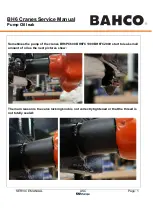
The Oakley CV/gate Buss
You really should think about using the Oakley Buss if you have a medium sized Oakley
system. Using the Oakley Dizzy board it allows the 'keyboard control voltage' (KCV) and
Gate signals to be piped around the back of the modular’s case along with the power supply
rails. Any VCO and VCF can be connected to the Oakley Buss's KCV line, and this will save
you having to patch KCV to every module that needs it. Inserting any patch lead into the
1V/OCT socket will override the CV bus line connection. The gate signals are treated
similarly to the KCV line but for use with the ADSRs and other envelope generator modules.
The Oakley CV/gate buss uses a common three way 0.1” Molex KK header to carry the two
signal lines around your modular. A third, as yet unused connection is also present for future
expansion, although typically this is taken to ground on the Dizzy board. More information
can be found in the Dizzy Builder's Guide.
The Oakley SVCO supports the Oakley CV/gate buss natively. The SVCO's main circuit
board features a three way header, labelled BUSS, that can be fitted to allow direct connection
to the CV/gate buss on an installed Oakley Dizzy system or to our VCO Controller module. If
not required, a simple two way jumper, like those used on computer motherboards, can be
fitted to connect between pins 1 and 2. By fitting this jumper the 1V/octave socket is shorted
to ground when a jack plug is not inserted thus reducing pick up from stray signals.
The Oakley Buss header with jumper inserted.
Although the Oakley Buss header is a three way connector the actual interconnect you need to
use has only one wire fitted. The Oakley VCO is connected only to pin 1 of the Oakley Buss.
This is the connection carrying KCV. This means you need to use only a single wire that is
terminated in a 3 way housing at either end. The first location of the housing, pin 1, is the only
one used with the other two locations being left empty and no other wires needed.
On no account should an interconnect with all three wires fitted be used to connect the Oakley
Buss to any module. The middle location, pin 2, is ground on the module and this should not
be connected to the Dizzy or midiDAC modules. Connecting the ground of a module to the
Dizzy ground in this way may induce earth loops and other problems.
6





























